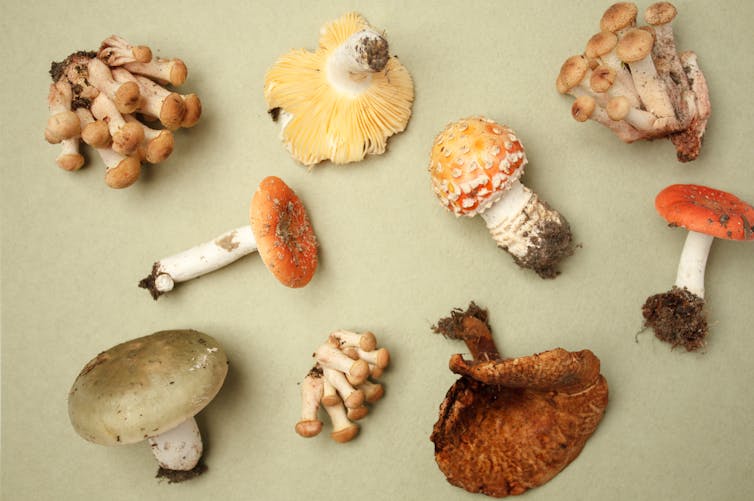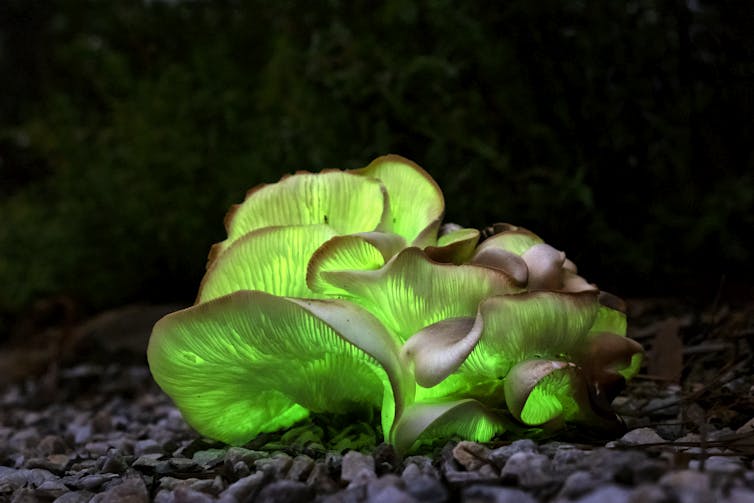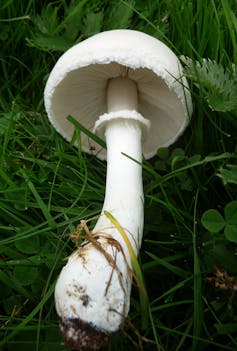Sheldon Receives NSF CAREER Award

The multi-year, $1.3 million grant will support Sheldon’s project examining behavioral shifts of temperate and tropical dung beetles in response to temperature change. In addition, the grant will provide internships for UT undergraduate students and research opportunities for Native American high school students.
“Dung beetles remove and recycle waste and are thus both ecologically and economically valuable, but these beneficial insects may be in trouble,” Sheldon said. “Like all insects, dung beetle development and survival are impacted by temperature. Researchers predict that warmer temperatures will result in population declines and tropical insects, which make up the vast majority of biological diversity on Earth, may be particularly at risk.”

“We will expose tropical and temperate dung beetles to temperature changes using lab experiments and field manipulations,” Sheldon said. “After observing the dung beetles’ responses, we will build a model to predict impacts of temperature change on insect populations.”
This work fits into Sheldon’s overall research program aimed at understanding the processes leading to the distribution and abundance of organisms and applying this knowledge to predict the impacts of climate change on biological diversity.
As part of the award, Sheldon will lead STEM education initiatives for students from diverse backgrounds and perspectives. She will work with a collaborator from the Eastern Band of Cherokee Indians (EBCI) to support science programs for Native American high school students. Her lab will also host undergraduate interns with the goal of increasing STEM literacy through field-based inquiry.
“This type of hands-on experience can increase interest in STEM fields and help students gain confidence to pursue advanced degrees,” she said.
Sheldon, who joined the UT faculty in 2016, credits the backing she received from her colleagues and the college for her successful grant proposal.
“I was given the encouragement and freedom to pursue my research goals and develop the education program that led to the CAREER award,” Sheldon said. “I also have great collaborators in Ecuador and with the EBCI who have supported the research and education goals, and talented lab members who gathered some of the preliminary data that went into the proposal.”
Sheldon received her bachelor’s degree in natural resources from the University of Michigan and her PhD in zoology from the University of Washington before completing an NSF postdoctoral fellowship in biology. She received the 2020 Faculty Academic Outreach Research and Creative Activity Award from the UT College of Arts and Sciences.
 Jessica Budke, an assistant professor in the Department of Ecology and Evolutionary Biology (EEB) and director of the
Jessica Budke, an assistant professor in the Department of Ecology and Evolutionary Biology (EEB) and director of the  Using field-collected plants and natural history specimens, Budke will use an innovative and integrated research approach that incorporates comparative analysis of function morphology, physiology, and evolution to explore and understand the processes that have led to diverse adaptations for regulating parental-offspring resource allocation across species.
Using field-collected plants and natural history specimens, Budke will use an innovative and integrated research approach that incorporates comparative analysis of function morphology, physiology, and evolution to explore and understand the processes that have led to diverse adaptations for regulating parental-offspring resource allocation across species. Budke and her students will use the experiences and data from the course to build educational modules and activities for UT programs at natural history museums and local public botanical gardens. They will host sessions about mosses and specimen research for students grades 3-12 and will build an educational module for the UT Biology in a Box program to engage kids with natural history collections and moss biology.
Budke and her students will use the experiences and data from the course to build educational modules and activities for UT programs at natural history museums and local public botanical gardens. They will host sessions about mosses and specimen research for students grades 3-12 and will build an educational module for the UT Biology in a Box program to engage kids with natural history collections and moss biology.




 Tomatoes are the heart of many backyard gardens. Tomato crops are also an important economic revenue in North America. The vegetable we all know as the “T” of a great summer BLT, however, may be in jeopardy due to a decline in its pollinator species because of climate change.
Tomatoes are the heart of many backyard gardens. Tomato crops are also an important economic revenue in North America. The vegetable we all know as the “T” of a great summer BLT, however, may be in jeopardy due to a decline in its pollinator species because of climate change. This year, the college awarded an academic outreach research award to
This year, the college awarded an academic outreach research award to  This year, the college awarded an academic outreach service award to
This year, the college awarded an academic outreach service award to  This year, the college awarded an academic outreach teaching award to
This year, the college awarded an academic outreach teaching award to  Nina Fefferman
Nina Fefferman Brian O’Meara
Brian O’Meara Karen W. Hughes
Karen W. Hughes Often when we envision a professor who has been teaching for more than 40 years, we think of yellowed note pads or dull lectures.
Often when we envision a professor who has been teaching for more than 40 years, we think of yellowed note pads or dull lectures.  Jennifer Schweitzer
Jennifer Schweitzer For decades, scientists have worked to understand the intricacies of biological diversity – from genetic and species diversity to ecological diversity.
For decades, scientists have worked to understand the intricacies of biological diversity – from genetic and species diversity to ecological diversity. “This is our magnum opus,” said Elizabeth Derryberry, associate professor in the UT Department of Ecology and Evolutionary Biology (EEB) and a senior author of the study. “This research is the product of a decades-long international collaboration to produce a completely sampled evolutionary history of a massive tropical radiation – the 1,306 species of suboscine passerine birds.”
“This is our magnum opus,” said Elizabeth Derryberry, associate professor in the UT Department of Ecology and Evolutionary Biology (EEB) and a senior author of the study. “This research is the product of a decades-long international collaboration to produce a completely sampled evolutionary history of a massive tropical radiation – the 1,306 species of suboscine passerine birds.” “The tropics are a natural laboratory for speciation research,” said Michael Harvey, recent EEB postdoc and lead author of the study. “Many high-profile studies over the years sought answers to fundamental questions concerning species formation and maintenance, but even the best of these studies sampled only a minority of the existing species within the clade in question.”
“The tropics are a natural laboratory for speciation research,” said Michael Harvey, recent EEB postdoc and lead author of the study. “Many high-profile studies over the years sought answers to fundamental questions concerning species formation and maintenance, but even the best of these studies sampled only a minority of the existing species within the clade in question.” For this study, Derryberry, Harvey, EEB Professor Brian O’Meara, and fellow researchers used a time-calibrated phylogenomic tree to provide information needed for estimating the dynamics of suboscine diversification across time, lineages, and geography. They also used the tree to test links between the dynamics and potential drivers of tropical diversity.
For this study, Derryberry, Harvey, EEB Professor Brian O’Meara, and fellow researchers used a time-calibrated phylogenomic tree to provide information needed for estimating the dynamics of suboscine diversification across time, lineages, and geography. They also used the tree to test links between the dynamics and potential drivers of tropical diversity. “This paper marks not only a change in our understanding of evolution in the tropics, but also in acknowledgement and valuation of the diversity of culture, expertise, and perspective in the field of ornithology,” Derryberry said.
“This paper marks not only a change in our understanding of evolution in the tropics, but also in acknowledgement and valuation of the diversity of culture, expertise, and perspective in the field of ornithology,” Derryberry said. She has been one of the leading scientists in the field of animal behavior for decades, and a role model for generations of young researchers. Her work with K-12 schools in Tennessee has touched thousands of students over the last 20 years, instilling a passion for biology and for the scientific process. And, as she says, in the 1970s, she helped stopped a war from occurring between two Central American countries.
She has been one of the leading scientists in the field of animal behavior for decades, and a role model for generations of young researchers. Her work with K-12 schools in Tennessee has touched thousands of students over the last 20 years, instilling a passion for biology and for the scientific process. And, as she says, in the 1970s, she helped stopped a war from occurring between two Central American countries.